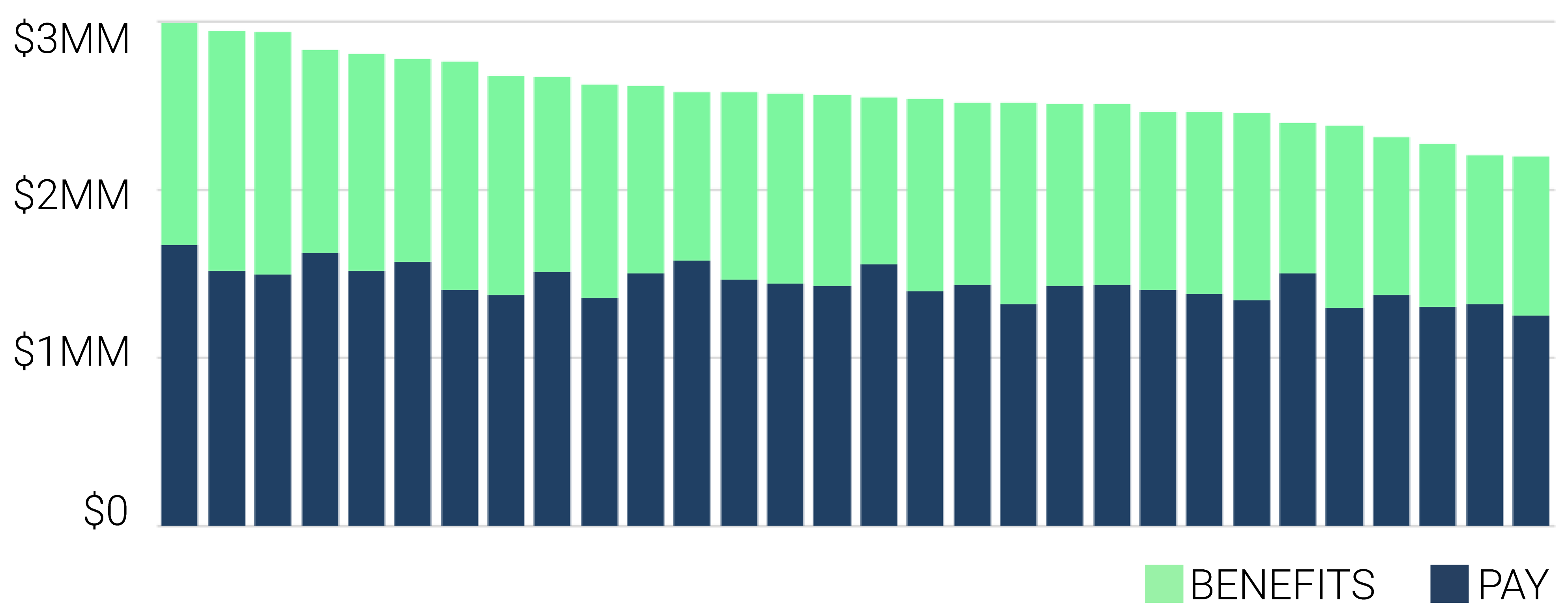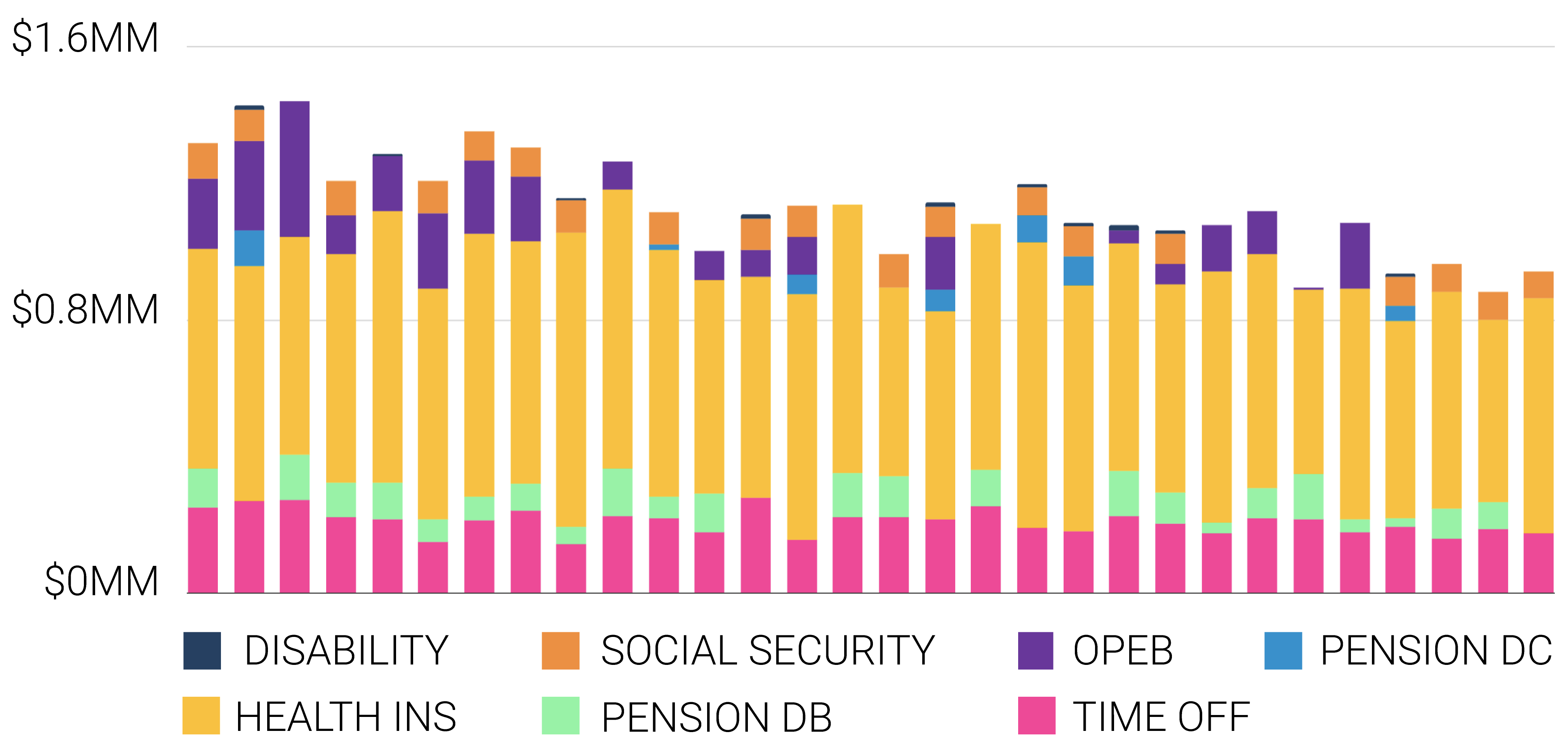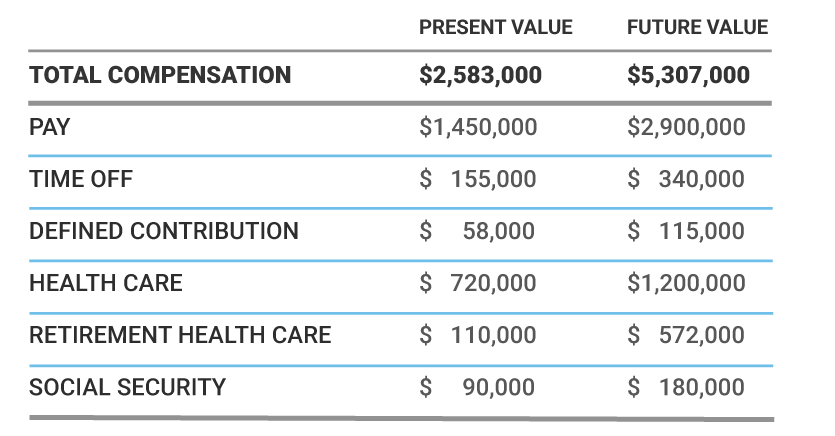White Paper
Municipal Pay and Benefits:
High Value, Low Awareness
by Pality Staff

How can municipal employers keep top employees from being poached? And how can they attract talent? A good place to start would be presenting benefits in dollar-value terms.
Municipalities understand the value of their total compensation packages. But the dollar value of benefits is not always visible to employees.
Just how much is a compensation package worth? We examine total compensation for a specific employee group across 30 cities and towns in Connecticut. We find that total future pay and benefits is worth as much as $3 million in present value for a new hire and up to $2.4 million in present value for a seasoned employee with 10 years of service.
fig 1. New Hire: Total Compensation, Present Value

As Figure 1 shows, total compensation ranges across municipalities. For the average municipality, the total compensation package for a new hire is $2.6 million. Already a large number, this is expressed in present value. The $2.6 million package represents $5.3 million worth of future paychecks and expense payments for benefits that will be made over the employee’s lifetime.
All future pay for both new hires and seasoned employees is calculated based on contractually guaranteed step-ups for longevity and education and a 2.5% annual increase in base pay. For contracts that require less than 2,080 hours of work, time-off is valued as pay that could be earned at a 1.5 overtime rate. For benefits, we estimate the employer’s going-forward contributions to health care and all past and future payments to Social Security and defined contribution pension plans, since these fund future benefits. For OPEB and defined benefit plans, we measure the present value of required employer contributions needed for benefit payments using a 5.5% discount rate. Medical cost inflation is included for OPEB and where contractually provided, COLAs for pensions.
The benefit mix is similar between new hires and seasoned employees. For new hires, health care is the most expensive benefit, followed by OPEB and then time-off. Defined contribution plans are smaller than defined benefit plans, and Social Security is worth as much as $100,000 (Figure 2).
fig 2. New Hire: Benefits Composition

The public sector offers another source of value–job security. Over one’s career, the chance of being unemployed for a year or more is 22%,1 a statistic that is significantly reduced for a public sector worker. The private sector worker not only has both a greater chance of lost pay but also a diminished wage profile once re-employed.
fig 3. Illustrative Pay and Benefits Summary

Municipalities offer good work-life balance, generous benefits, and job security. Like many employers, they face challenges attracting and retaining talent. A tangible compensation summary, sketched out in Figure 3, would help with these challenges.
[1] Donna S. Rothstein, "An analysis of long-term unemployment," Monthly Labor Review, U.S. Bureau of Labor Statistics, July 2016, doi.org/10.21916/mlr.2016.32
